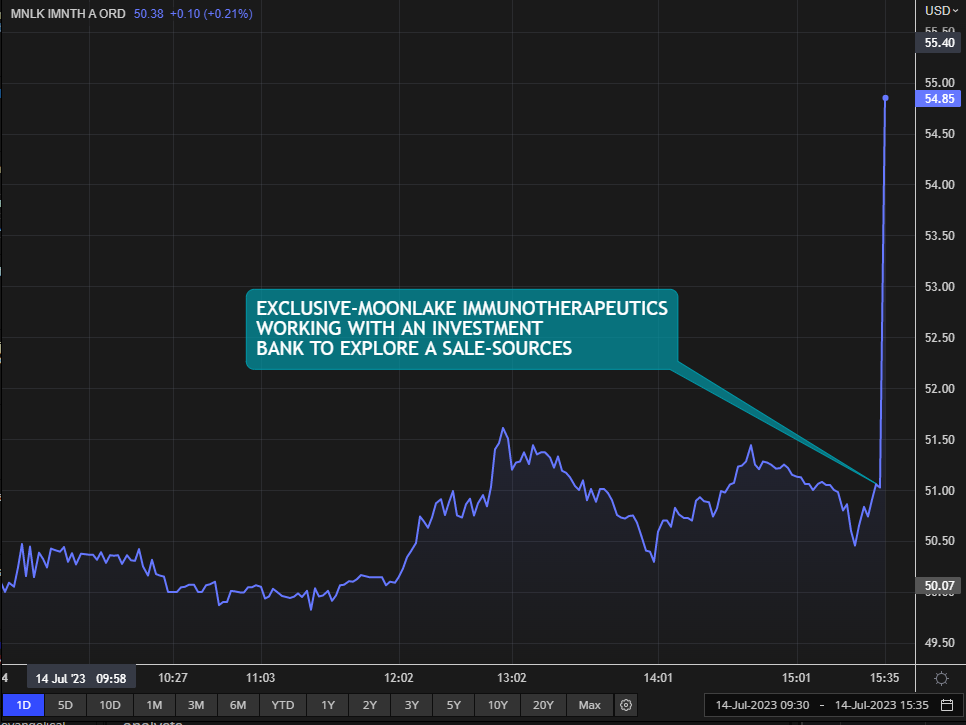Clustering trading rule p&l
I recently upgraded my live production system to include all the extra instruments I've added on recently. I also did a little consolidation of trading rules, simplifying things slightly by removing some rules that didn't really have much allocation, and adding a couple from my new book. As usual I set the instrument weights and forecast weights using my handcrafting methodology, which is basically a top down method that involves clustering things into groups in a hierarchical fasion.In my backtests I do this clustering using the correlation matrix as a guide, but for production weights I use heurestics. So for instruments I say things like 'bonds are probably more correlated with each other than with other assets' and form the clusters initially as asset classes. And for forecast weights, which allocate across trading rules, I say things like 'momentum type trading rules are probably more correlated with each other', so I end up using a hierarchy like this:Convergent (eg carry and mean reversion), Divergent (eg momentum)Generic trading rule (eg EWMAC)Specific trading rule variation (eg EWMAC2,8)Now I recently tested this clustering method for instruments in this blog post. OK it was 17 months ago, but it felt recent to me. Basically I used a clustering methodology and threw in the actual correlation matrix to see how the grouping turned out. It was quite interesting. So I thought it would be quite interesting to do a similar thing with forecast weights. Effectively I am sense checking my heuristic guidelines to see if they are completely nuts, or vaguely okay.Some code.Getting the correlation matrixWell you might think this is easy, but it's not. The correlation matrix here is the correlation of returns for a given set of trading rules and variations. But returns of what? A single instrument, like the S&P 500? That obviously may be unrepresentative of the sample generally, and we're not going to do this exercise for the 200+ instruments I have in my dataset now. What about the correlation of average returns taken across a bunch of instruments, or perhaps the average of the correlations taken across the same bunch - note these aren't quite the same thing. For example an average of correlations will give every instrument the same weight, wheras an average of returns will give a higher weighting to instruments with more data history.And if we are doing averaging, do we just do a simple average - which will be biased since 37% of my futures are equities? Or do we use the instrument weights?The good news is it probably won't make too much difference. Given enough history, the correlation of trading rule forecast returns is pretty similar across instruments. But we probably want to avoid overweighting certain asset classes, or equally weighting instruments without much history. So I'm going to go for taking the return correlation of portfolios for each trading rule. Each portfolio consists of the same trading rule being traded in all the instruments I trade, weighted by my actual instrument weights. Now I don't actually trade all rules in all instruments, because of trading costs, and sometimes because the instrument has certain flaws, but what we are trying to get here is as much information as possible to build a robust correlation matrix. I will also use pre-cost returns; not that it will make any difference, but the point here is to discover how similar rules are to each other, which doesn't depend on costs.Finally note that I have 135 instruments with instrument weights, because some of my 208 are duplicates (eg micro and mini S&P 500), or I can't legally trade them, or for some other reason.Results: N=2Let's kick things off then:Cluster 1 'convergent'['mrinasset160', 'carry10', 'carry30', 'carry60', 'carry125', 'relcarry', 'skewabs365', 'skewabs180', 'skewrv365', 'skewrv180']Cluster 2 'divergent'['breakout10', 'breakout20', 'breakout40', 'breakout80', 'breakout160', 'breakout320', 'relmomentum10', 'relmomentum20', 'relmomentum40', 'relmomentum80', 'assettrend2', 'assettrend4', 'assettrend8', 'assettrend16', 'assettrend32', 'assettrend64', 'normmom2', 'normmom4', 'normmom8', 'normmom16', 'normmom32', 'normmom64', 'momentum4', 'momentum8', 'momentum16', 'momentum32', 'momentum64', 'accel16', 'accel32', 'accel64']An absolutely perfect convergent vs divergent split. The labels by the way are added by me, not the code.Results: N=3Cluster 1 'convergent' (Unchanged)['mrinasset160', .... ]Cluster 2 'fast divergent'['breakout10', 'breakout20', 'relmomentum10', 'relmomentum20', 'relmomentum40', 'relmomentum80', 'assettrend2', 'assettrend4', 'normmom2', 'normmom4', 'momentum4', 'accel16']Cluster 3 'medium and slow divergent'['breakout40', 'breakout80', 'breakout160', 'breakout320', 'assettrend8', 'assettrend16', 'assettrend32', 'assettrend64', 'normmom8', 'normmom16', 'normmom32', 'normmom64', 'momentum8', 'momentum16', 'momentum32', 'momentum64', 'accel32', 'accel64']This is why we are doing this exercise - we've j
I recently upgraded my live production system to include all the extra instruments I've added on recently. I also did a little consolidation of trading rules, simplifying things slightly by removing some rules that didn't really have much allocation, and adding a couple from my new book. As usual I set the instrument weights and forecast weights using my handcrafting methodology, which is basically a top down method that involves clustering things into groups in a hierarchical fasion.
In my backtests I do this clustering using the correlation matrix as a guide, but for production weights I use heurestics. So for instruments I say things like 'bonds are probably more correlated with each other than with other assets' and form the clusters initially as asset classes. And for forecast weights, which allocate across trading rules, I say things like 'momentum type trading rules are probably more correlated with each other', so I end up using a hierarchy like this:
- Convergent (eg carry and mean reversion), Divergent (eg momentum)
- Generic trading rule (eg EWMAC)
- Specific trading rule variation (eg EWMAC2,8)
Now I recently tested this clustering method for instruments in this blog post. OK it was 17 months ago, but it felt recent to me. Basically I used a clustering methodology and threw in the actual correlation matrix to see how the grouping turned out. It was quite interesting. So I thought it would be quite interesting to do a similar thing with forecast weights. Effectively I am sense checking my heuristic guidelines to see if they are completely nuts, or vaguely okay.
Getting the correlation matrix
Well you might think this is easy, but it's not. The correlation matrix here is the correlation of returns for a given set of trading rules and variations. But returns of what? A single instrument, like the S&P 500? That obviously may be unrepresentative of the sample generally, and we're not going to do this exercise for the 200+ instruments I have in my dataset now. What about the correlation of average returns taken across a bunch of instruments, or perhaps the average of the correlations taken across the same bunch - note these aren't quite the same thing. For example an average of correlations will give every instrument the same weight, wheras an average of returns will give a higher weighting to instruments with more data history.
And if we are doing averaging, do we just do a simple average - which will be biased since 37% of my futures are equities? Or do we use the instrument weights?
The good news is it probably won't make too much difference. Given enough history, the correlation of trading rule forecast returns is pretty similar across instruments. But we probably want to avoid overweighting certain asset classes, or equally weighting instruments without much history. So I'm going to go for taking the return correlation of portfolios for each trading rule. Each portfolio consists of the same trading rule being traded in all the instruments I trade, weighted by my actual instrument weights.
Now I don't actually trade all rules in all instruments, because of trading costs, and sometimes because the instrument has certain flaws, but what we are trying to get here is as much information as possible to build a robust correlation matrix. I will also use pre-cost returns; not that it will make any difference, but the point here is to discover how similar rules are to each other, which doesn't depend on costs.
Finally note that I have 135 instruments with instrument weights, because some of my 208 are duplicates (eg micro and mini S&P 500), or I can't legally trade them, or for some other reason.
Results: N=2
Let's kick things off then:
Cluster 1 'convergent'
['mrinasset160', 'carry10', 'carry30', 'carry60', 'carry125', 'relcarry', 'skewabs365', 'skewabs180', 'skewrv365', 'skewrv180']
Cluster 2 'divergent'
['breakout10', 'breakout20', 'breakout40', 'breakout80', 'breakout160', 'breakout320', 'relmomentum10', 'relmomentum20', 'relmomentum40', 'relmomentum80', 'assettrend2', 'assettrend4', 'assettrend8', 'assettrend16', 'assettrend32', 'assettrend64', 'normmom2', 'normmom4', 'normmom8', 'normmom16', 'normmom32', 'normmom64', 'momentum4', 'momentum8', 'momentum16', 'momentum32', 'momentum64', 'accel16', 'accel32', 'accel64']
An absolutely perfect convergent vs divergent split. The labels by the way are added by me, not the code.
Results: N=3
Cluster 1 'convergent' (Unchanged)
['mrinasset160', .... ]
Cluster 2 'fast divergent'
['breakout10', 'breakout20', 'relmomentum10', 'relmomentum20', 'relmomentum40', 'relmomentum80', 'assettrend2', 'assettrend4', 'normmom2', 'normmom4', 'momentum4', 'accel16']
Cluster 3 'medium and slow divergent'
['breakout40', 'breakout80', 'breakout160', 'breakout320', 'assettrend8', 'assettrend16', 'assettrend32', 'assettrend64', 'normmom8', 'normmom16', 'normmom32', 'normmom64', 'momentum8', 'momentum16', 'momentum32', 'momentum64', 'accel32', 'accel64']
Results: N=4
Cluster 1 'convergent mean reversion'
['mrinasset160']
Cluster 2 'convergent skew and carry'
['carry10', 'carry30', 'carry60', 'carry125', 'relcarry', 'skewabs365', 'skewabs180', 'skewrv365', 'skewrv180']
Cluster 3 'fast divergent - unchanged'
['breakout10', 'breakout20', ....]
Cluster 4 'medium and slow divergent - unchanged'
['breakout40', 'breakout80', ....]
Results: N=5
Cluster 1 'convergent mean reversion (unchanged)'
['mrinasset160', 'mrwrings4']
Cluster 2 'convergent skew and carry (unchanged)'
['carry10', 'carry30', 'carry60', ....]
Cluster 3 'fast divergent - unchanged'
['breakout10', 'breakout20', ....]
Cluster 4 'slow divergent'
['breakout160', 'breakout320','assettrend32', 'assettrend64','normmom32', 'normmom64','momentum32', 'momentum64']
Cluster 5 'medium speed divergent'
['breakout40', 'breakout80','assettrend8', 'assettrend16','normmom8', 'normmom16','momentum8', 'momentum16','accel32', 'accel64']
Results: N=6
Cluster 1 'convergent mean reversion (unchanged)
['mrinasset160']
Cluster 2 'convergent skew and carry' (unchanged)
['carry10', 'carry30', 'carry60', ...]
Cluster 3 'fast divergent - unchanged'
['breakout10', 'breakout20', ....]
Cluster 3
['relmomentum10', 'relmomentum20', 'relmomentum40', 'relmomentum80']
Cluster 4
['breakout10', 'breakout20','assettrend2', 'assettrend4','normmom2', 'normmom4','momentum4', 'accel16']
Cluster 5 'slow divergent' (unchanged - was cluster 4)
['breakout160', 'breakout320',...]Cluster 6 'medium speed divergent' (unchanged - was cluster 5)
['breakout40', 'breakout80',...]
Results: N=7
Cluster 1 'convergent mean reversion (unchanged)
['mrinasset160']
Cluster 2 'convergent skew and carry' (unchanged)
['carry10', 'carry30', 'carry60', ...]
Cluster 3 'relative momentum' (unchanged)
['relmomentum10', 'relmomentum20', 'relmomentum40', 'relmomentum80']
Cluster 4 'fast divergent' (unchanged)
['breakout10', 'breakout20'...]Cluster 5 'slow divergent ex. accel'
['breakout160', 'breakout320', 'assettrend32', 'assettrend64', 'normmom32', 'normmom64', 'momentum32', 'momentum64']
Cluster 6 'slow acceleration'
['accel32', 'accel64']Cluster 7 'medium speed divergent' (unchanged - was cluster 6)
['breakout40', 'breakout80',...]
Results: N=8
Cluster 1 'convergent mean reversion (unchanged)
['mrinasset160']Cluster 2 ('skew)
['skewabs365', 'skewabs180', 'skewrv365', 'skewrv180']
Cluster 3 ('carry')
['carry10', 'carry30', 'carry60', 'carry125', 'relcarry']
Cluster 4 'relative momentum' (unchanged)
['relmomentum10', 'relmomentum20', 'relmomentum40', 'relmomentum80']
Cluster 5 'fast divergent' (unchanged)
['breakout10', 'breakout20'...]Cluster 6 'slow divergent ex. accel'
['breakout160', 'breakout320',...]
Cluster 7 'slow acceleration' (unchanged)
['accel32', 'accel64']Cluster 8 'medium speed divergent' (unchanged)
['breakout40', 'breakout80',...]
Results: N=11
Cluster 1 'slow asset mean reversion'
['mrinasset160']
Cluster 2 'skew'
['skewabs365', 'skewabs180', 'skewrv365', 'skewrv180']
Cluster 3 'carry'
['carry10', 'carry30', 'carry60', 'carry125', 'relcarry']
Cluster 4 'slow relative momentum'
['relmomentum10', 'relmomentum20']
Cluster 5 'fast relative momentum'
['relmomentum40', 'relmomentum80']
Cluster 6 'divergent speed 2'
['breakout20', 'assettrend4', 'normmom4', 'momentum4']
Cluster 7 'divergent speed 1 (fastest)'
['breakout10', 'assettrend2', 'normmom2', 'accel16']
Cluster 8 'divergent speed 5 (slowest)'
['breakout160', 'breakout320', 'assettrend32', 'assettrend64', 'normmom32', 'normmom64', 'momentum32', 'momentum64']
Cluster 9 'slow acceleration'
['accel32', 'accel64']
Cluster 10 'divergent speed 4'
['breakout80', 'assettrend16', 'normmom16', 'momentum16']
Cluster 11 'divergent speed 3'
['breakout40', 'assettrend8', 'normmom8', 'momentum8']A new heirarchy for handcrafting trading rules
- Convergent
- Mean reversion
- Skew
- Equal split between 4 skew rules
- Carry
- Outright carry
- Relative carry
- Divergent
- Speed 1 (fastest: turnover > 45)
- acceleration - nothing fast enough
- relmomentum10
- other trend
- breakout10
- assettrend2
- normmom2
- momentum4
- Speed 2 (22 < turnover <45)
- acceleration16
- relmomentum20
- other trend
- breakout20
- assettrend4
- normmom4
- momentum8
- Speed 3 (12 < turnover < 22)
- acceleration32
- relmomentum40
- other trend
- breakout40
- assettrend8
- normmom8
- momentum16
- Speed 4 (7 < turnover < 12)
- acceleration64
- relmomentum80
- other trend
- breakout80
- assettrend16
- normmom16
- momentum32
- Speed 5 (4 < turnover < 7)
- other trend
- breakout160
- assettrend32
- normmom32
- momentum64
- Speed 6 (turnover > 4)
- other trend
- breakout320
- assettrend64
- normmom64
What's Your Reaction?













.png)



























